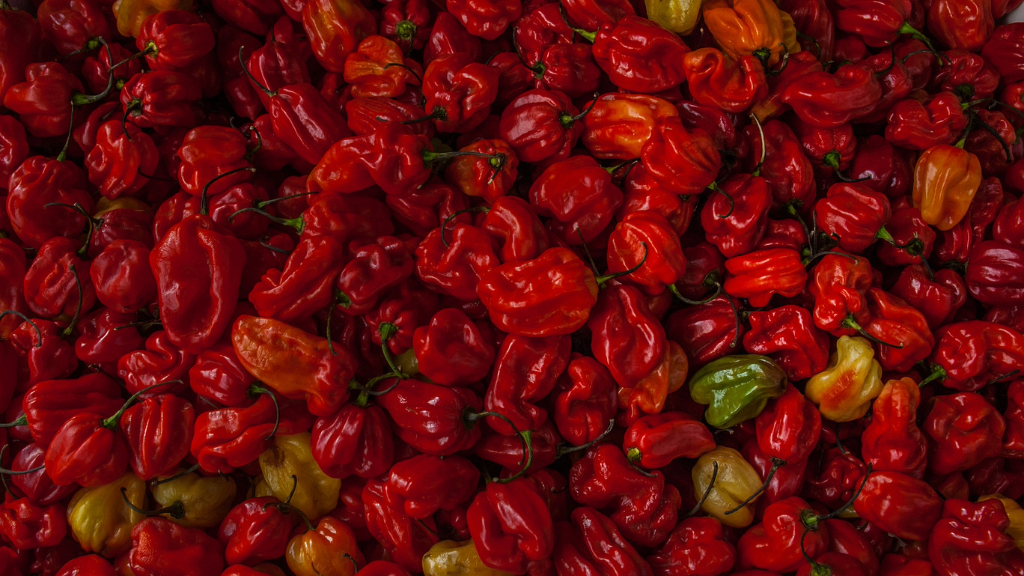The History Of Scorpion Pepper Plants


If you like food that is spiced so hot your eyes water, ears sweat and tongue is on fire, the Scorpion pepper is for you. The heat is measured in Scoville heat units. Each fruit from this plant has 1.2 million SHU, which translates to a pepper that is more than 230 times hotter than a jalapeno. The common name warns eaters of the sting from the fruits but that doesn't stop thrill seekers and denizens of its native Trinidad.
What are Scorpion Peppers?
The history of the Scorpion pepper begins in Tobago and Trinidad in the district Moruga. Often called the Moruga Scorpion, the species is Capsicum chinense. The Scorpion pepper was developed by Wahid Ogeer and has been studied by the University of the West Indies since the 1990s. The plants thrive in hot weather and the heat amps up when the plant is stressed by drought and hot temperatures. Some growers swear by giving the plants worm castings, believing the levels of heat will intensify. It seems something like a competition to breed hotter and hotter peppers. This competitive notion likely was the beginning history of the Scorpion pepper. The Chile Pepper Institute was started in 1992 in New Mexico and researches peppers. The fruit was deemed the hottest pepper by the Chile Pepper Institute but that fact was disputed by the Guinness World Records folks. They say it is the Carolina Reaper, with a SHU rating of 1.57 million per fruit. Other record holders from the Chile Pepper Institute that have been displaced are Infinity Chili, Naga Viper pepper and the most recent record holder, Bhut Jolokia. The peppers are deeply red, wrinkled little lantern-like fruits, although there is a brown Scorpion with chocolate-purple skin. Scorpion peppers don't seem too bad at the first bite, but the heat builds exponentially the longer it is on the palate. There is a sweet-hot flavor that works well in many Western Indies dishes. It is the sweet notes that are most disarming initially. As they are cooked or masticated, they release the capsaicin, the component in peppers that provide the heat. Caution is advised when working with the peppers. The capsaicin level is so high it can actually burn skin and may affect the mucous membranes.
Growing Scorpion Peppers
Scorpion peppers are recently being cultivated in the United States where they are most commonly made into hot sauces. Growing Scorpion peppers isn't much different from any pepper, but to achieve the high level of spice, a very hot climate is required or greenhouse cultivation in cooler regions. The plants are perennials except in areas where cold fall temperatures kill the plant. In native ranges, the plant's growth slows in cool seasons. Plants grow from seed readily but need 90 days from sowing to maturity. In cooler climates, seeds will need to be started indoors at least 6 weeks before the date of the last frost. Keep plants moderately moist but reduce watering as they begin to fruit. The heat giving capsaicin will increase until you have peppers hot enough to cry over.
Gardening tips, videos, info and more delivered right to your inbox!
Sign up for the Gardening Know How newsletter today and receive a free copy of our e-book "How to Grow Delicious Tomatoes".
-
 Looking For Plants To Give You The Soft And Fuzzies? Try These 5 Fuzzy Leaf Plant Options
Looking For Plants To Give You The Soft And Fuzzies? Try These 5 Fuzzy Leaf Plant OptionsLovers of texture, drama, silver foliage and tactile plants will adore these special sensory garden additions. These fuzzy leaf plant options will leave you all aglow
By Susan Albert
-
 Get Ready For A Summer Of Hummers! Grow These Full Sun Hummingbird Plants and Flowers
Get Ready For A Summer Of Hummers! Grow These Full Sun Hummingbird Plants and FlowersIf you’re lucky enough to enjoy a sunny backyard, make sure you are maxing out on your pollinator opportunities and grow these full sun hummingbird plants and flowers
By Tonya Barnett